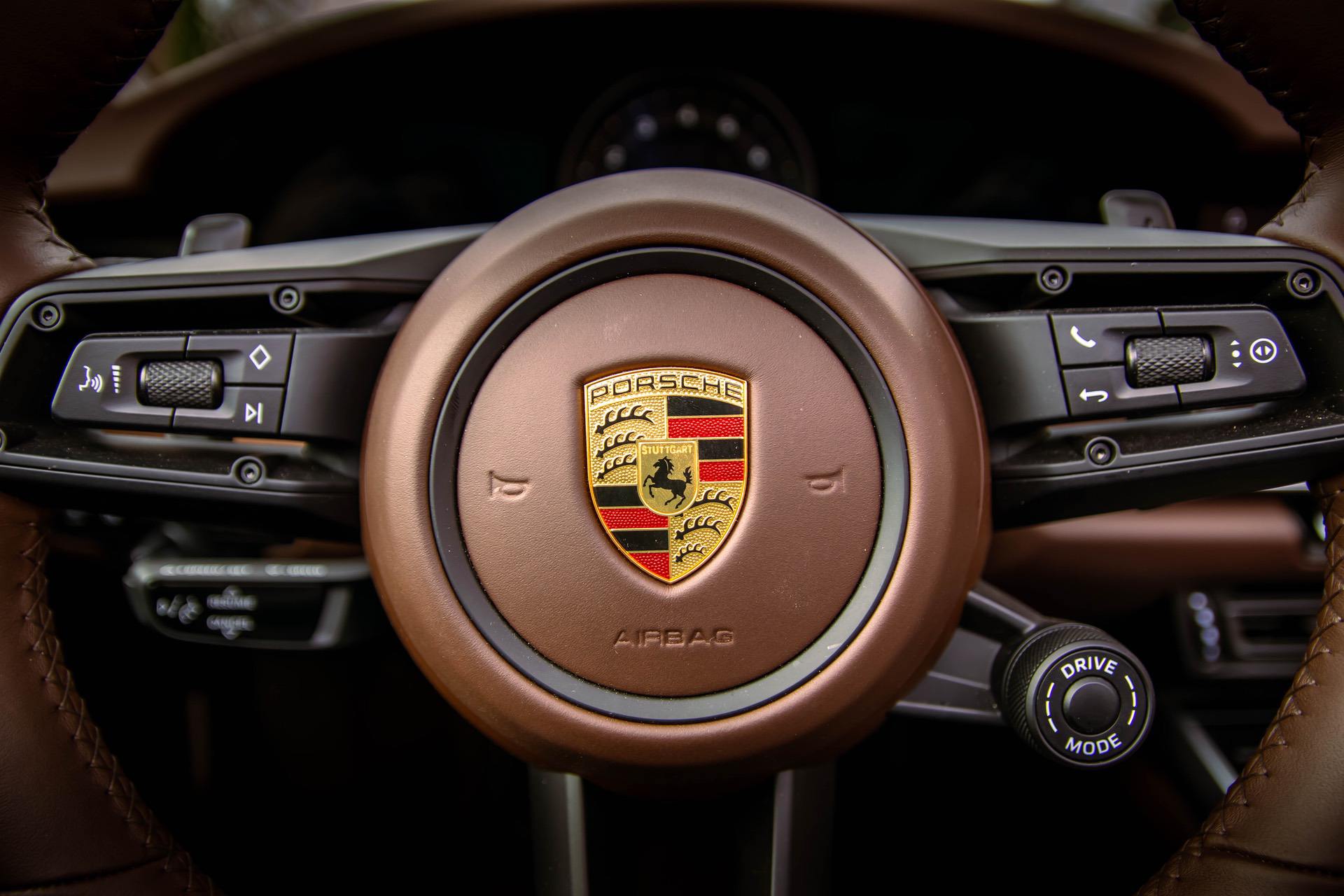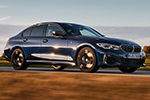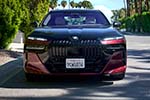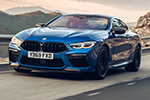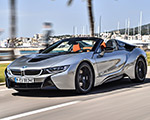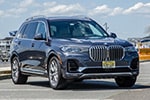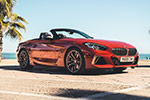When we reviewed the “BMW Behind The Scenes” set of three books we described them as “A masterpiece.” The author was given a level of trust to tell the company’s inside story like never before and the book set went on to be awarded the prestigious RAC Book Of The Year. It’s packed with never-seen information and plenty of untold stories. Here’s one of them – when BMW tried to buy Porsche. You can get a BMWBLOG exclusive offer of $45 off the last copies and free shipping at the end of this feature. Now, let Steve pull he curtains back on something remarkable.
Mergers: The Talk of the 1990s
If today might seems like a volatile era in global politics and the smaller world of the automotive industry, then maybe there’s a shred of consolation that the car makers were pretty het up in the early-’90s. McKinsey, the management consultants, were partly to blame after publishing a well-reasoned discussion paper that gathered global coverage. It had crunched the numbers and concluded that no car manufacturer making less than one million vehicles per year would survive unless they merged or aligned with a partner. It proclaimed that two car makers were in that horrible place of being too big to be bought up and too small to survive alone.
One was Renault and the other was BMW. The consultants reasoned that Daimler-Benz was protected by its diversification into aerospace and other technology services, while BMW was just too, well too much of a car company dependent upon making modes volumes of cars at high profit. Sadly, Daimler-Benz decided this wasn’t enough and hooked up with Chrysler and BMW, well it was now keen as can be in 1991 to find a solution.
BMW was in no mood to be bought out by a larger company; the Quandt family still owned a majority shareholding, and the company was making good money. However, CEO Eberhard von Kuenheim could – like everyone else – see the logic in McKinsey’s argument. He concluded that since BMW was some way below the seven-figure-for-survival number McKinsey claimed then BMW needed to grow; now was time to shop for a car company to buy and become the acquirer rather than the acquired.
BMW was out shopping.
What Brand Could Fit BMW’s Values?
In early-’91, von Kuenheim dispatched Wolfgang Reitzle, his Board Member For Engineering, to find a suitably premium fit with BMW. First up was Rolls-Royce/Bentley – then under the same ownership of the British Vickers Engineering company. They were certainly premium and BMW was planning to supply them with a lot of 7 Series electrical equipment and engines for a smaller car. But the trouble was that they were built in such small volumes that Rolls-Royce/Bentley would not greater volume; BMW needed a bigger fish to swallow. Reitzle found the ideal candidate in Land Rover, then operating as a semi-autonomous organization within the Rover Group. It was perfect, although the larger Rover Group parent made insipid cars of poor reliability that only the Brits bought in significant numbers, they had two hidden jewels.
Land Rover, including Range Rover, were unreliable vehicles, like other Rovers, but that could be fixed. What the did offer was high margins and an off-roading brand that was as premium as BMW’s, yet with little-to-no crossover. Land Rover was a perfect fit, and there was more. Thanks to narrow-minded management the Mini had been ignored for years and become so old it met no contemporary safety legislation. Rover had the small 100, formerly called the Metro and it too was old and decrepit by now – Rover needed desperately needed a new small car. It had partnered with Honda but, perhaps wisely, the Japanese company was unwilling to let Rover make its own versions of small Hondas for Europe. Honda needed to make a profit, and a small, Honda-based Rover would reduce its ability to get more volume in Europe.
Reitzle and Anglohle with a perfect grasp of English and nuances of the British culture was certain that Mini could be a standalone brand, not just a slightly embarrassing 30-year-old relic in the Rover range. Rather than negotiate with Rover Group, which he viewed with mild disdain, Reitzle approached its owner, British Aerospace. The company accepted his offer price but insisted that BMW couldn’t cherry-pick the two brands it wanted and instead had to buy the whole slightly-rotten Rover Group. Reitzle could see huge issues in that, Rover’s motley collection of cars was not premium and – worse still – based on Honda product which meant it would be a three-way tryst with a Japanese car maker. Despite the attractions of Land Rover and Mini, the entire Group wasn’t a good fit and Reitzle wisely walked away.
Stuttgart Was On The Map
His next port of call was Stuttgart, home to Daimler-Benz and Porsche. Obviously, a tie-up with Mercedes might yield collaboration benefits but Reitzle had made a few enemies there (a story within BMW by Design) and the two brands had existed more as natural enemies than friends. Then there was Porsche.
It could not be a better fit; two German brands equally committed to engineering excellence and sporty product, plus – best of all for BMW – one of them was financially on its knees. Porsche was limping along with 968, a heavily facelifted 944 four-cylinder car that was wildly expensive to make and – thanks to the US dollar/Deutsche Mark exchange rate – making a loss, while the aged 911 made next to no money.
Worse still, Porsche had had to write-down a $300 million loss following the cancellation of its stillborn 989 four-door sedan. At the time – amusing as it is today when Porsche offers four models with four-door bodystyles – it was a radical step for Porsche to make a four-door sedan. Chief designer Harm Lagaay’s team created an attractive looking sedan that ushered in the style of the later 993-generation 911. Looks were not the issue; the engineers had run riot with a unique V8 engine and costs spiraled up into what would be well over a $200,000 sticker price today. It was the right Porsche at the wrong time.
Porsche’s Price: $600 Million
Reitzle met with the Porsche family, including fellow-engineer Ferdinand Piech, and made his pitch. BMW would buy the company, but protect its cars by leaving the management in place to run the business, so that it could invest in a new 911 and expand the range. BMW would provide purchasing assistance, testing facilities, logistics and access to capital – the very things that were crippling the sports car maker. All the Porsche family needed to do is name its price. And it did, it was a large $600 million – a huge some for a small sportscar maker teetering on the edge and making no money.
Reitzle took the $600 million number back to BMW CEO von Kuenheim who, was outraged at Porsche’s impertinence for the same number could have bought the far higher volume, if far less appealing, Rover Group. But Reitzle had an ace up his sleeve, his dealings with Ferdinand Piech at Porsche had led to an alternate suggestion that Reitzle join Porsche instead as CEO and turn the Stuttgart company around. Reitzle aspired to being CEO and accepted Piech’s offer. Von Kuenheim was further outraged, not only were Porsche asking too high a price, but they had also hired Reitzle too!
This was utterly unacceptable to the by-now furious von Kuenheim who held Reitzle to his contract that forbid him to simply leave and join another carmaker.
Rover Group Joins BMW
It was a stain on Reitzle’s reputation that von Kuenheim was unwilling to remove and forget. When the older man decided to retire and take a seat on the Supervisory Board, Reitzle was overlooked in favor of Production Director Bernd Pischetsrieder. Unfortunately, the new man running things had the same old problem and the same time-worn solution. There were not many partners out there for BMW to dance with now Porsche was out the frame and Pischetsrieder took the disastrous course of buying the entire Rover Group. Sadly, it would end up costing BMW twice as much as Porsche and years of pain as the Munich company learned the pain of operating in the mass market. Against all odds, it retained Mini but had to sell Land Rover to Ford and pay off the losses generated by Rover. If only it had paid $600 milion for Porsche then the German car industry would have taken a very different shape.
BMWBLOG users can get a special $45 discount off the last remaining copies of Steve’s three book set, BMW Behind The Scenes. The box set comes with free shipping, personally signed by Steve Saxty. The book was given an RAC 2024 Book Of The Year award and you can see full details here . Use the coupon code BMWBLOG at checkout.


